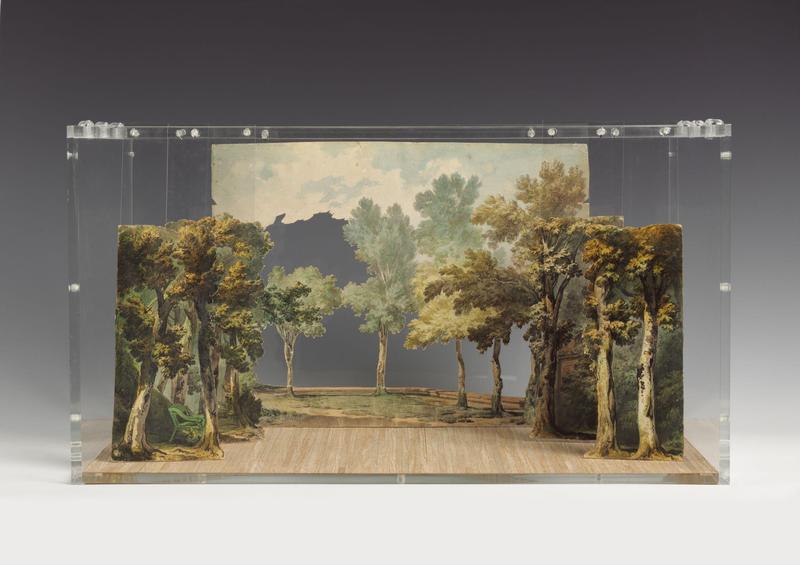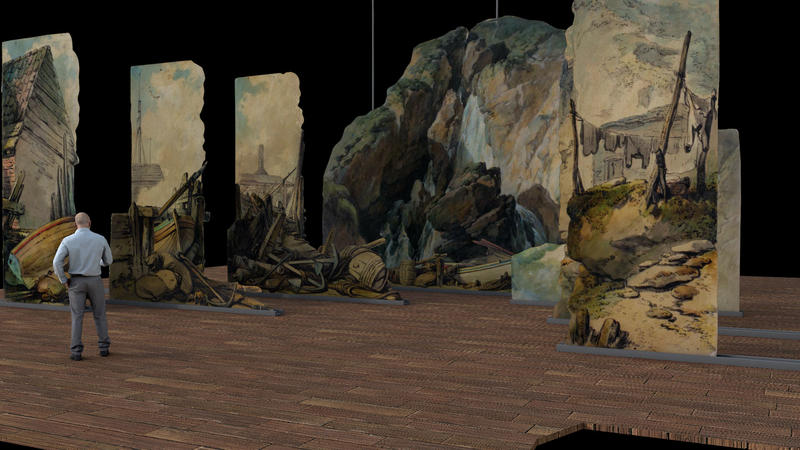Spotlight on Research: A Stage in Time
Recovering the Wow Effect of 18th-Century Theatre

We tend to think of special effects as something modern, something that belongs to the age of CGI. But the appeal of spectacle goes back many centuries. If you lived in London in the 18th century, you’d know the theatre to be a place of wonder, visual magnificence, and vicarious travel. Plays sought to thrill audiences with elaborate sets, lighting effects, and even pyrotechnics that transported them back in time or to fantastic or exotic locations.
Yet this experience is lost to us. Sure, we have scripts, but spectacular theatrical forms – such as pantomime – weren’t driven by dialogue. They were more visual than verbal and the short texts that come down to us offer only the barest hint of what it must have been like to sit in the playhouse watching them. As someone who researches and teaches 18th-century theatre, this has long been a source of great frustration.
Out of this frustration emerged my collaboration with augmented reality specialists, Arcade Ltd, which was made possible by TORCH Knowledge Exchange Innovation funding. Together, we’ve created a smartphone app – A Stage in Time – that transports users back to the spectacular world of 18th-century theatre at the touch of a button.
From the Set Model to the Smart Phone
The starting point for the app was three set models in the archives at the Victoria and Albert Museum that date from 1785. These are rare and fragile items. You can pretty much count on one hand the number of surviving set models for this period of British theatre. They’re also tiny. Our project was driven by the aim of scaling up the models digitally, of finding a way to enable people to experience the sets up close and at actual size. Augmented reality (AR) tech makes this possible.
One of the aspects of the project that most excited me was the opportunity to use the state-of-the-art spectacular technology of today to speak to – and give us a vivid and immersive sense of – the state-of-the-art spectacular technology of yesterday. The sets in question are all from a pantomime called Omai, or A Trip Around the World. Written by John O’Keeffe, with scenery designed by pioneering scenographer Philippe Jacques de Loutherbourg, this was one of the most sensational plays of the century. It premiered at the Theatre Royal, Covent Garden (on the site of what’s now the Royal Opera House) in December 1785. Then, as now, pantomime was associated especially with Christmas.
A Trip Around the World
The titular protagonist of Omai is based on a real person: Mai, a man from Ra'iatea in the South Pacific. He was taken from Polynesia to London by Captain Cook in 1774. Once in Britain, Mai became a celebrity and curiosity – an example of a ‘noble savage’. In the pantomime, Mai’s story becomes part of a lavish celebration of British imperial power and the spectacle of racial difference.
Omai was very much theatre for an age of empire, for an age in which Britain became increasingly confident in its sense of cultural and racial superiority. Theatre was a key site in which Britons were imagining the world beyond their shores – and imagining their nation to be at the very centre of that world. We know that the sets and costumes of Omai aimed to be geographically and ethnographically accurate. Many were copied from the drawings of John Webber, one of the artists Cook took on his third voyage; Webber even seems to have been consulted about specific set designs.
The Stage in Time app reminds users that the history of British theatre is also the history of empire and racism. The viewer simply opens the app in a large space (an empty hall or a garden or park are ideal) and they find themselves on the Covent Garden stage in 1785, with de Loutherbourg’s remarkable sets in situ. From there, they can walk around the scenery and learn more about the play and its theatrical and historical contexts.

A Research Challenge
The challenge of this project for me, as a researcher, has been to understand the practicalities of eighteenth-century staging and scenography at the most detailed level possible. Designing the app has confronted me with just how much I didn’t know about 18th-century theatre. I’ve had to think about the exact dimensions of the Covent Garden stage at the time, about the precise arrangement and spacing of the various scenic components, about the way the scenes would be lit, and about what the mechanisms allowing scenery to be moved on and off stage would have been and looked like. All of this has anchored my largely conceptual take on spectacular theatre in the material spaces and technologies of eighteenth-century theatre production. Helping Arcade to ‘build’ a stage and set has transformed the sense I have of the period’s theatre and theatrical practices just as much as the experience of wandering through de Loutherbourg’s extraordinary sets at the press of a button.
Omai promised to take theatregoers around the world without them having to leave the playhouse. Our app now promises users a form of time-travel without them having to leave the present. I hope it encourages us – researchers, teachers, students – to think in new ways about the complex histories of theatre, of wonder, and of cultural representations of others and elsewheres.
— Dr David Francis Taylor
You can download the app for free by searching ‘A Stage in Time’ on the App Store or Google Play. You can also watch a fly-through video of the digital reconstructed sets on YouTube: https://www.youtube.com/watch?v=GrBvMug1qGw&t=34s.



